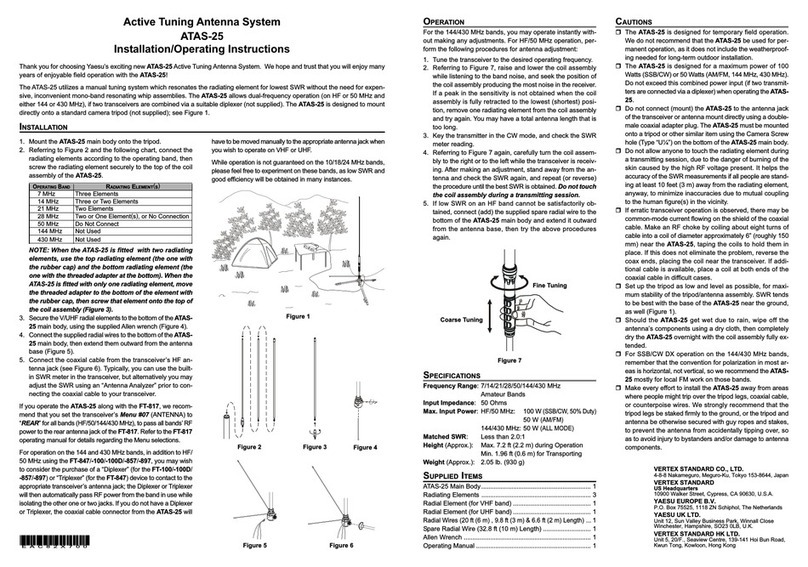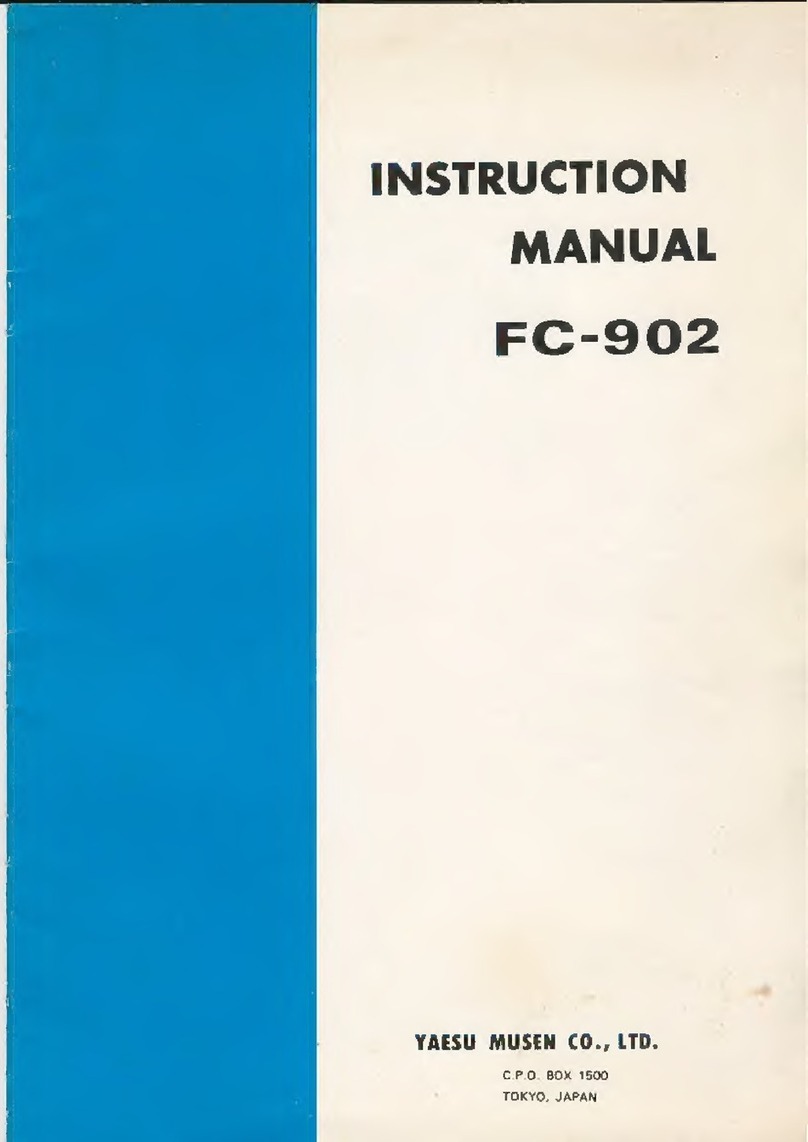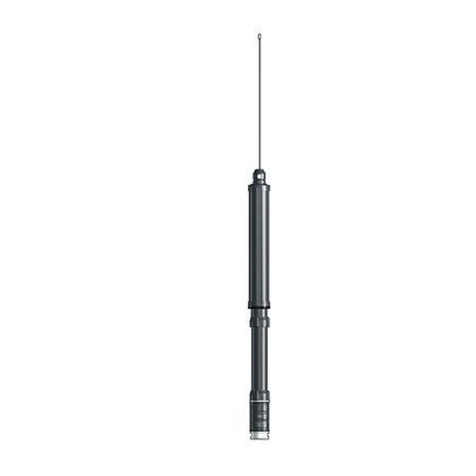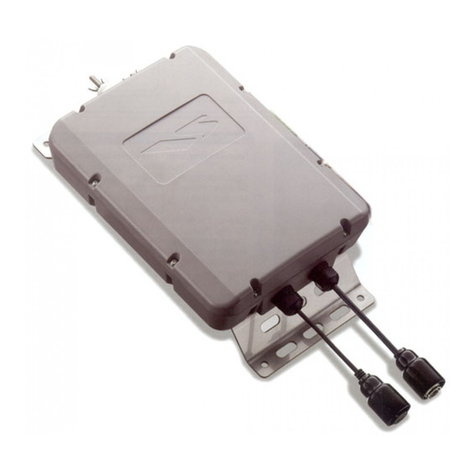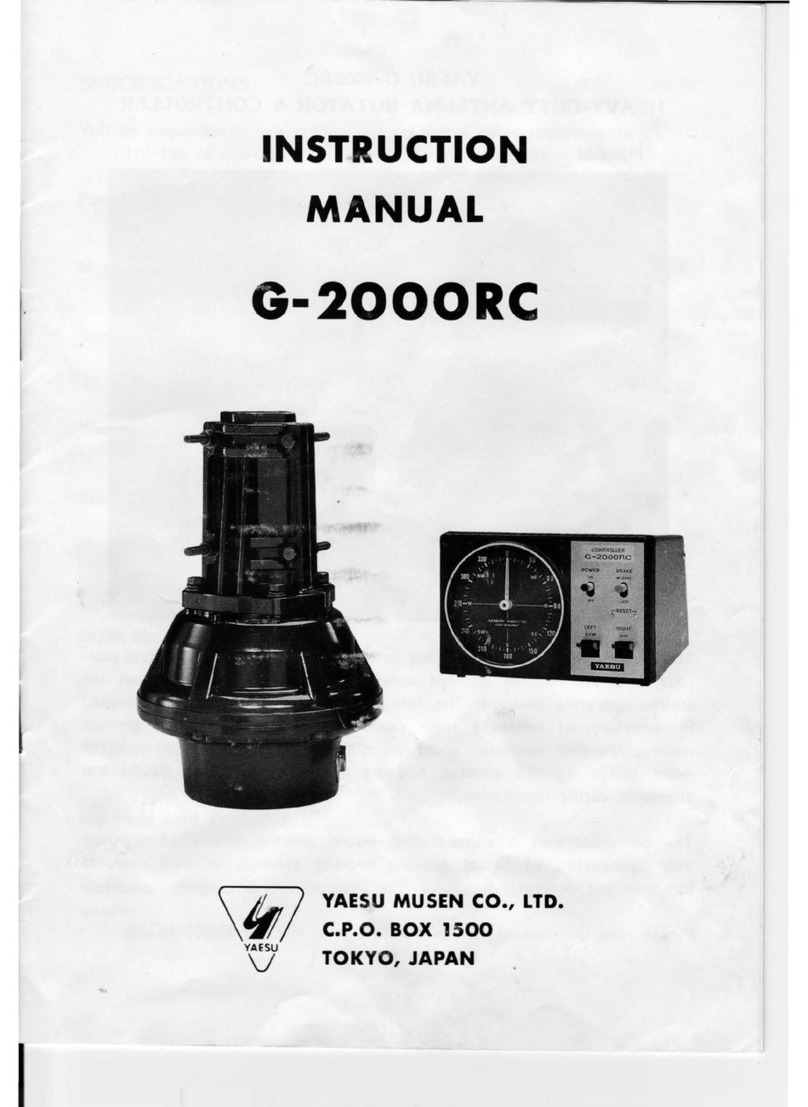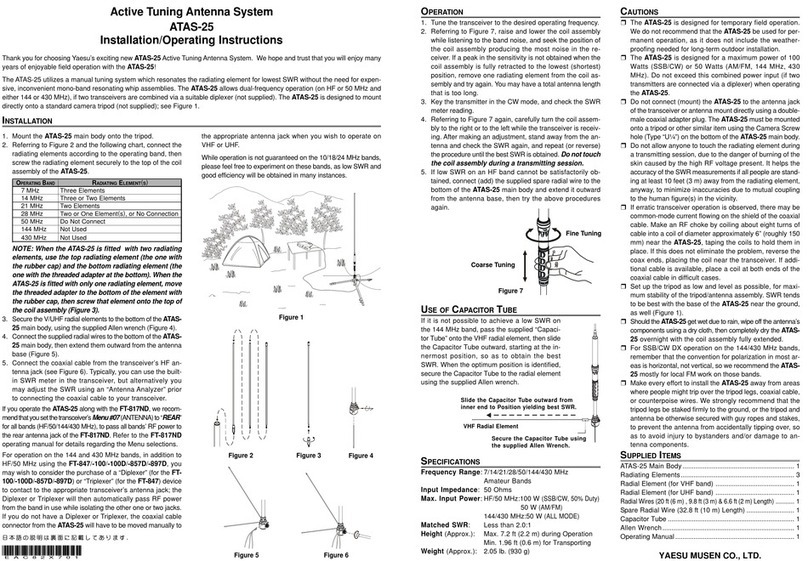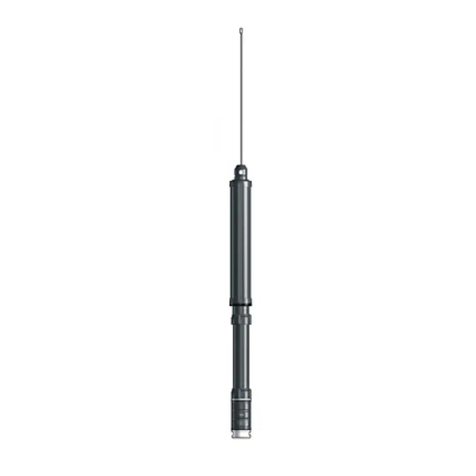
G-800SA/G-1000SA User ManualPage 8
Important!! Before mounting the mast to the rotator, a
single hole must be drilled through the bottom of the
mast to accommodate an anti-twist support bolt used in
the base support clamp halves.
1. Drill a 9 mm diameter hole through both walls of
the mast, centered 50 mm from the mast bottom (see
Figure 1). Ensure the drill is maintained perpendicu-
lar and centered when making the holes, to ensure
proper alignment of the holes in the mast with those
in the base support clamp.
2. Attach the rotator to the tower’s rotator mounting
plate, using the supplied M8 x 16 bolts and spring
washers. It is recommended that the tips of the bolts
be lightly dipped in lubricating grease, to ease dis-
assembly in the future (see Figure 2).
3. If a thrust bearing (such as the optional Yaesu model
GS-065) is to be utilized, mount it on the top of the
tower (see Figure 3) using the supplied hardware.
4. Partly tighten the mast clamp to the rotator hous-
ing using the supplied M8 x 25 bolts , spring
washers and flat washers (see Figure 5).
5. Using a “gin pole” or other raising fixture, insert the
antenna mast through the bearing from above, and
set the mast in the rotator’s mast clamps, then partly
tighten the mast clamps using the supplied M8 x 70
bolts and spring washer.
One side of the clamp has ridges on
either side of the bolt holes; the bolts
should be inserted from this side, so the ridges hold
the bolt head from turning.
6. Pass the supplied M8 x 95 screw through the
mast clamps and through the mast, then partly tighten
it using the supplied square nut .
7. Partly tighten the thrust bearing’s mast bolts, so as to
center the mast in the thrust bearing. When you are
satisfied that the mast is centered, tighten the thrust
bearing’s mast bolts to secure the mast in place.
8. Now tighten all the nuts of the mast clamp except
for the square nut holding the M8 x 95 bolt through
the mast clamps and mast. Leave the square nut only
lightly secured at this time.
Do not over-tighten the nuts on the
mast clamps. They should be tight-
ened until the spring washer becomes flat, then tight-
ened further by ½ to one turn maximum.
9. Install the rotator control cable’s round plug into the
jack on the side of the rotator’s base, and tighten the
connector ring to secure the connector. Slide the rub-
ber boot over the connector; while putting a slight
amount of inward pressure on the rubber boot, use
electrical tape to secure the back end of the rubber
boot to the cable. This slight inward pressure on the
rubber boot will enhance the weatherproofing of the
installation. Secure the control cable to the tower in
several places, using electrical tape and/or UV-re-
sistant cable ties.
10. Get a ground crew member to set the controller to
180° (South), which corresponds to 180° of rota-
tion clockwise from the left “stop” point. During ro-
tation, watch the M8 x 95 bolt to be sure it does not
bind between the mast and the mast clamps. If bind-
ing is observed, stop rotation and make slight ad-
justments to the thrust bearing and/or mast clamps,
so as to eliminate the binding. If the M8 x 95 bolt is
not binding, you can go ahead and tighten the square
nut securely.
11. Provide sufficient slack in the coaxial cable such
that the antenna can rotate over its full 450° range
without putting any tension on the coax (see Figure
8). Secure the coax to the tower, using electrical tape
and/or UV-resistant cable ties.
12. Installation is now complete. If you have scratched
through the melamine coating of the rotator during
installation, you may wish to apply several coats of
clear acrylic spray to help protect the bare metal from
corrosion. After installation is complete, test the sys-
tem by operating the rotator through the entire range
of its rotation. It is helpful to do so with the help of
an observer, so that rotation can be stopped if some
obstruction, binding, or tension on the coaxial cable’s
turning loop should be encountered during the per-
formance test.
Installation Note
If using a roof tower with a long mast between
the top of the tower and the antenna, the use of a
“Guy Bearing” is highly recommended. The
Yaesu GS-050 and GS-065 include guying
“ears” which allow attachment of guy cables. As
installing a guying system may cause the center-
lines of the guy bearing and the rotator to become
mis-aligned, be certain to check the roof tower
attachment and guy cable alignment to ensure that
the mast is straight.
Mounting the Rotator and Antenna
Advice
Caution
INSTALLATION OF THE ROTATOR AND ANTENNA ON TOWER












